您好,登录后才能下订单哦!
本篇文章给大家分享的是有关Python中有关树的使用方法,小编觉得挺实用的,因此分享给大家学习,希望大家阅读完这篇文章后可以有所收获,话不多说,跟着小编一起来看看吧。
树的存储、表示与遍历
树的存储与表示
顺序存储:将数据结构存储在固定的数组中,然在遍历速度上有一定的优势,但因所占空间比较大,是非主流二叉树。二叉树通常以链式存储。
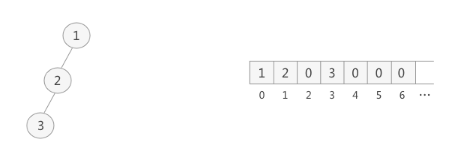
某个节点为空是用0表示。
节点的结构:
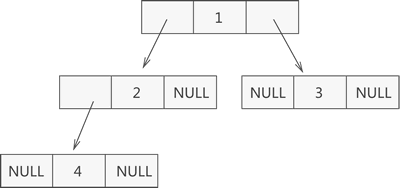
二叉树的建立
class Node(object): """二叉树节点的封装""" def __init__(self, element=None, lchild=None, rchild=None): self.element = element self.lchild = lchild self.rchild = rchild class Tree(object): """二叉树的封装""" def __init__(self, root=None): self.root = root def __add__(self, element): # 插入节点的封装 node = Node(element) # 1.判断是否为空,则对根结点进行赋值 if not self.root: self.root = node # 2. 如果存在跟结点,将根结点放入队列 else: queue = [] # 将根结点放入队列中 queue.append(self.root) # 对队列中的所有节点进行遍历 # 这里的循环每次都是从根结点往下循环的 while queue: # 3.弹出队列中的第一个元素(第一次弹出的为根节点,然后是根的左节点,根的右节点,依次类推) cur = queue.pop(0) if not cur.lchild: cur.lchild = node return elif not cur.rchild: cur.rchild = node return else: # 左右子树都存在就将左右子树添加到队列中去 queue.append(cur.lchild) queue.append(cur.rchild)
二叉树的遍历
遍历是指对树中所有结点的信息的访问,即依次对树中每个结点访问一次且仅访问一次,我们把这种对所有节点的访问称为遍历(traversal)
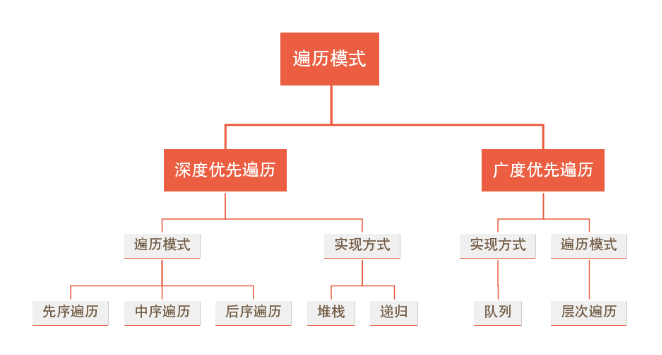
广度优先遍历(层次遍历)
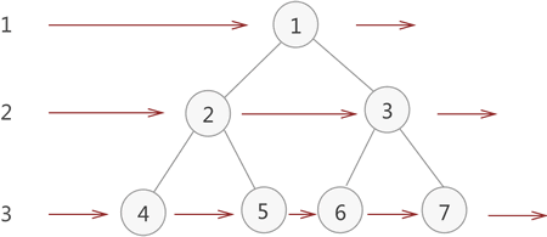
遍历结果为1,2,3,4,5,6,7
def breadth_travel(self): """利用队列实现树的层次遍历""" if self.root == None: return # 将二叉树的节点依次放入队列中,通过访问队列的形式实现树的遍历 queue = [] queue.append(self.root) while queue: node = queue.pop(0) print(node.element, end=',') if node.lchild != None: queue.append(node.lchild) if node.rchild != None: queue.append(node.rchild) print()
深度优先遍历
深度优先遍历有三种方式:
先序遍历(根->左->右):先访问根结点,再先序遍历左子树,最后再先序遍历右子树,
中序遍历(左->根->右):先中序遍历左子树,然后再访问根结点,最后再中序遍历右子树,
后序遍历(左->右->根):先后序遍历左子树,然后再后序遍历右子树,最后再访问根结点。
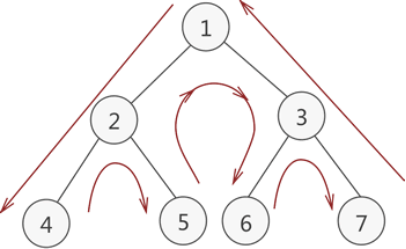
先序遍历: 1 2 4 5 3 6 7
中序遍历: 4 2 5 1 6 3 7
后序遍历: 4 5 2 6 7 3 1
递归实现先序遍历
# 深度优先遍历:先序遍历---根 左 右 def preorder(self, root): """递归实现先序遍历""" if not root: return print(root.element, end=',') self.preorder(root.lchild) self.preorder(root.rchild)
递归实现中序遍历
# 深度优先遍历:中序遍历---左 根 右 def inorder(self, root): """递归实现中序遍历""" if not root: return self.inorder(root.lchild) print(root.element, end=',') self.inorder(root.rchild)
递归实现后序遍历
# 深度优先遍历:后序遍历---左 右 根 def postorder(self, root): """递归实现后序遍历""" if not root: return self.postorder(root.lchild) self.postorder(root.rchild) print(root.element, end=',')
测试代码:
if __name__ == '__main__':
binaryTree = Tree()
for i in range(7):
binaryTree.__add__(i+1)
# 广度优先遍历
print("广度优先:")
binaryTree.breadth_travel()
# 深度优先,先序遍历
root = binaryTree.root
binaryTree.preorder(root)
print('深度优先--先序遍历')
binaryTree.inorder(root)
print('深度优先--中序遍历')
binaryTree.postorder(root)
print('深度优先--后序遍历')广度优先: 1,2,3,4,5,6,7, 1,2,4,5,3,6,7,深度优先--先序遍历 4,2,5,1,6,3,7,深度优先--中序遍历 4,5,2,6,7,3,1,深度优先--后序遍历
和我们预期的结果完全相同。
以上就是Python中有关树的使用方法,小编相信有部分知识点可能是我们日常工作会见到或用到的。希望你能通过这篇文章学到更多知识。更多详情敬请关注亿速云行业资讯频道。
免责声明:本站发布的内容(图片、视频和文字)以原创、转载和分享为主,文章观点不代表本网站立场,如果涉及侵权请联系站长邮箱:is@yisu.com进行举报,并提供相关证据,一经查实,将立刻删除涉嫌侵权内容。